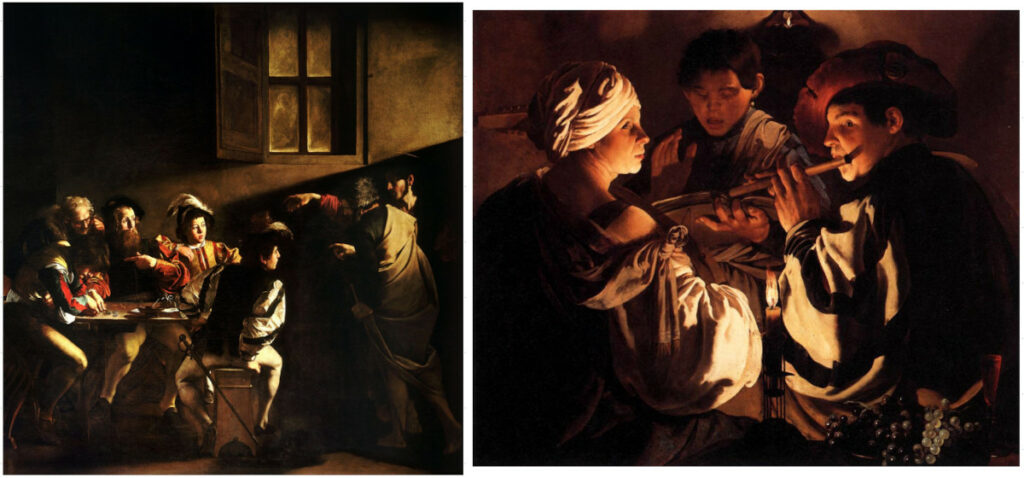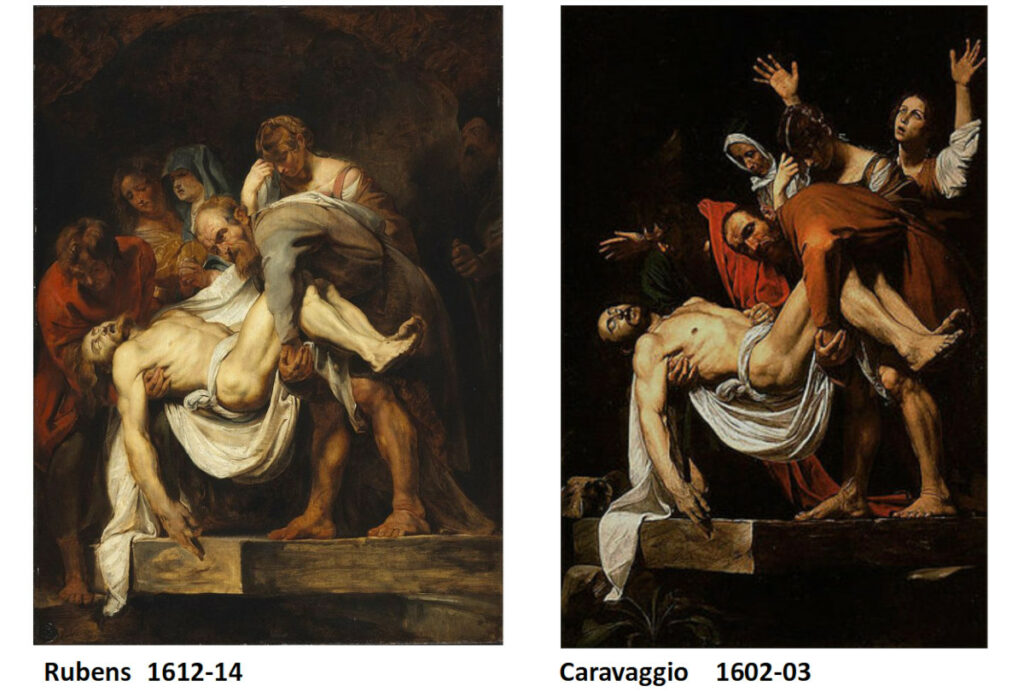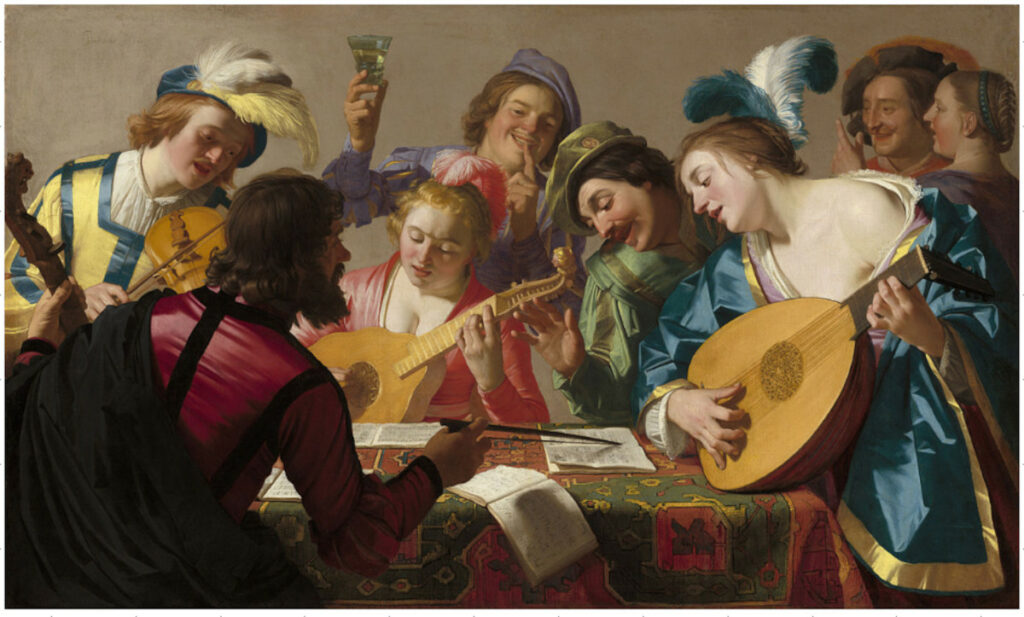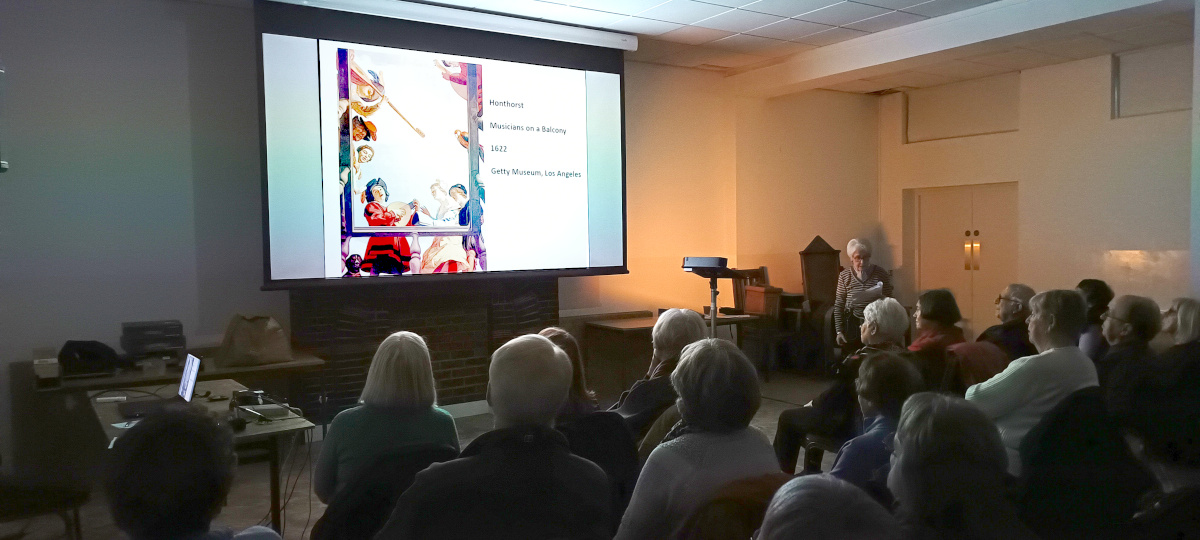Our course on Dutch Art from the Golden Age continued with an examination of the influence the Italian Artists of the 17th Century had on the artists working in the Netherlands. Perhaps the clearest influence to the beginner’s eye is the use of Chiaroscuro (literally light-dark) – a technique exploited in Italy by Caravaggio.

Jennifer, our guide to the Golden Age of Dutch Art, had prepared a slide show illustrating how both the lighting and the composition of the paintings had been influenced in the Netherlands by the artists who had travelled to Rome to see what the Italian painters were doing. Rembrandt, Vermeer and Jan Steen had not travelled to Italy, but we were shown how their styles were influenced in turn by the other Dutch painters who had travelled.

Religion was an important influence on Italian art in the 17th Century, and Jennifer illustrated how compositions had started to reflect this when Dutch artists returned from Rome. They formed a drinking club that was called “The Bentvueghels” (Birds of a Feather), and shared models, costumes and props for their compositions. Often this represented a strong contrast to the subjects they were painting, and consequently members of The Bentvueghels had code names that disassociated them from their religious art.

Jennifer richly illustrated her talk with the works of Caravaggio alongside the works of Hendrick Ter Brugghen, Dirck Van Baburen, Rubens and Gerard Van Honthorst, and in no time our two hour slot had been filled.

